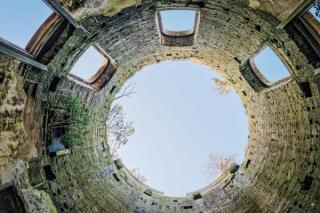
Why social impact must be accounted for like climate and nature
by Clodagh Connolly, Nicola Inge, Andres Schottlaender
View post

Archaeology and cultural heritage are not the first thing that spring to mind when referencing sustainability. But just like oil and gas reserves, historic buildings and archaeological remains are a non-renewable resource. Once all the Roman villas and Victorian cotton mills are gone - they really are gone. In our role as archaeological and cultural heritage consultants, we help to manage this issue, assisting our clients with their sustainability goals and environmental objectives, as well as overcoming key sustainability challenges.
The historic building stock in the UK is a valuable but finite resource that can, and should, be managed to provide benefits to communities and the general public. The re-use and adaption of historic buildings within a development site, rather than wholesale demolition to enable modern development, can provide for a unique offering, retaining local character and distinctiveness. The end result is ultimately more attractive to stakeholders and signals positive messages around conservation and sustainability goals. For example, the retrofitting of an historic building to ensure its continued viability whilst carefully preserving features of significance demonstrates a sympathetic approach towards conservation and sits well against emerging themes on sustainability and heritage capital.
National planning policy across the UK, including the NPPF, Planning Policy Wales and the recently published draft NPF4 in Scotland, support these goals. Notably, the draft NPF4 references a need for historic assets to be resilient to climate change with redundant and neglected historic buildings requiring sustainable and productive uses.
We have professionals embedded within our Archaeology & Heritage team that can provide advice on how historic buildings can be dovetailed into largescale projects to achieve maximum sustainability and compliance with policy. Early advice is vital to maximising the potential of a historic building. Understanding what is significant about it and why and turning ‘constraints’ into ‘opportunities’ is key to planning success within the historic built environment.
Sustainability goals can still be achieved in respect to Archaeology. The ultimate goal is to determine where archaeological remains are located within a potential development footprint and to design a project around the archaeological constraint that aims to avoid it. Where nationally significant remains are concerned this is a statutory requirement. However, more often than not, where remains of lesser significance are concerned and through a route that sits in full compliance with planning policy, this non-renewable resource may be ‘preserved’ by the record. In this instance, the loss of remains is offset by their detailed recording. The resultant positive heritage capital, through the provision of an educational resource, benefits local communities and allows the developer to demonstrate positive environmental engagement.
Early consultation with our Archaeology & Heritage team will assist in understanding how cultural heritage and archaeological constraints within a development footprint can be properly managed with sustainability and heritage capital goals maximised wherever possible.
With our advice, this non-renewable resource is not a constraint to development but a route for enhancement. Archaeology and cultural heritage can provide unique opportunities within the built environment sector to not only further our knowledge of the past but also provides a way to act sustainably with regards to cultural heritage. The key is to proactively engage with the resource and understand it so that opportunity can be realised and maximised alongside a sustainable agenda. By working hand in hand to further sustainability goals, positive outcomes for heritage and natural capital can benefit current and future generations and demonstrate a client’s commitment to environmental improvement.